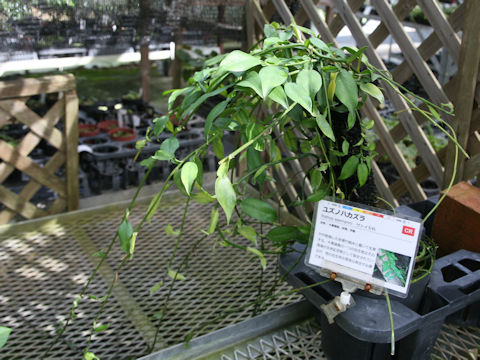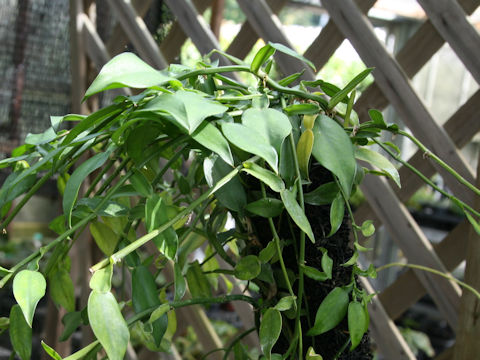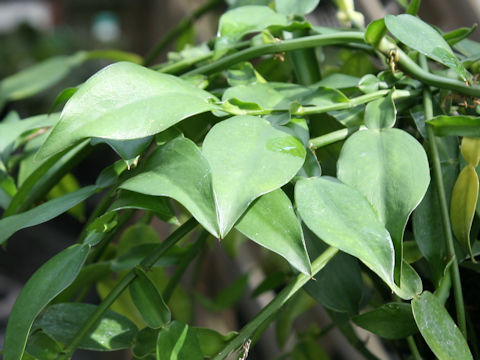 |






|

|
わが国の南西諸島にある大東諸島から台湾、それに中国南部に分布しています。うっそうとした森や湿った山間の谷などに生え、蔓性で近くの樹木や岩によじ登り、長さは10メートルほどになります。よく分枝しして、枝からも根をだします。葉は披針形から長楕円形で、先端は鋭く尖り、長さ1~3センチ、幅2~7ミリの扁平な葉柄があります。ほとんど1年中、葉腋から肉穂花序をだし、緑白色から白色の小花を咲かせます。果実は卵形の液果で、赤色に熟します。環境省のレッドリストでは絶滅危惧ⅠA類(CR)に登録されています。台湾華語では「柚葉藤」、中国語では「石柑子(shi gan zi)」と呼ばれます。
|

|
サトイモ科ポトス属の常緑多年草で、学名は Pothos chinensis (syn. Pothos seemannii)。英名は Orange-leaved pothos。
|

|
The Orange-leaved pothos (Pothos chinensis) belongs to Araceae (the Arum family). It is an evergreen perennial herb that is distributed from the Daito Islands in the Nansei Islands of Japan to Taiwan and southern China. It grows in thick forests and damp mountain valleys, and is a vine that climbs up nearby trees and rocks, growing to a length of around 10 m. It branches frequently and sends out roots from its branches. The leaves are lanceolate to oblong in shape, with sharp points at the ends and a flat leaf stalk that is 1 to 3 cm long and 2 to 7 mm wide. It produces greenish-white to white flowers on a spadix that emerges from the leaf axils almost year-round. The fruit is an ovate berry that ripens red. It is listed as Critically Endangered (CR) on the Red List of the Ministry of the Environment. In Taiwanese, it is called "柚葉藤" and in Chinese, "石柑子" (shi gan zi).
|

|
茨城県つくば市「つくば実験植物園」にて、2024年10月13日撮影。
|


